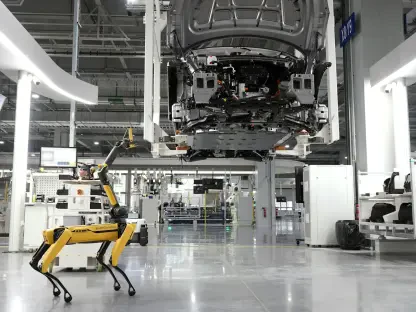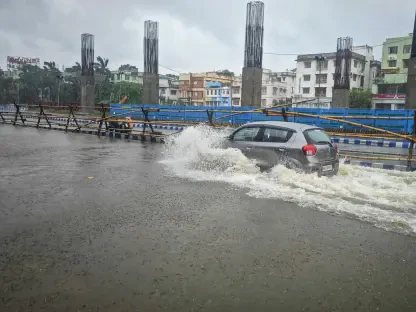What happens when the arteries of global trade clog up, sending shockwaves through every industry? In 2025, the insurance sector finds itself on the front lines of an unprecedented crisis, grappling with relentless supply chain disruptions and skyrocketing risk costs. From delayed shipments to cyber breaches, the challenges are piling up, forcing insurers to rethink how they protect businesses in a world where uncertainty reigns supreme. This is not just a hiccup—it’s a seismic shift reshaping the very foundation of risk management.
Why This Crisis Demands Attention
The stakes couldn’t be higher for insurers as supply chain breakdowns ripple across economies. Disruptions—whether from geopolitical tensions, natural disasters, or digital attacks—are no longer isolated incidents but systemic threats driving up expenses and complicating coverage. Businesses of all sizes feel the squeeze as premiums climb and terms tighten in a hardened market. This isn’t merely a financial burden; it reflects deeper trends of instability that threaten global commerce and demand urgent adaptation from an industry at a turning point.
Unpacking the Chaos of Global Logistics
Supply chains, once the reliable backbone of trade, have become a minefield of risks. Port bottlenecks and tariff impacts, like the de minimis tax on low-value imports under $800, continue to inflate shipping costs, leaving insurers scrambling to price policies amid constant volatility. Flexible terms are becoming the norm as static models fail to keep pace with unpredictable delays and disruptions. The ripple effects touch every corner of the market, pushing the industry to rethink traditional approaches.
Beyond logistics, the fragility extends to specific pain points. Warehousing, often a stronghold of risk control in the U.S., faces new threats from inventory stagnation during external shocks such as hurricanes. Insurers are rolling out adaptive programs to address fluctuating stockpiling trends and trade patterns, aiming to cushion the blow of sudden losses. This tailored approach signals a shift toward more responsive coverage in a landscape of endless surprises.
Commercial Auto Sector Under Siege
The commercial auto insurance market is teetering on the edge of a crisis. Loss ratios have soared due to nuclear verdicts, labor shortages, and parts inflation, rendering some risks nearly uninsurable. Adding fuel to the fire, private equity’s role in litigation funding drives claim costs even higher, introducing complex financial dynamics into an already strained sector. Insurers face a daunting task: balancing skyrocketing expenses with the need to remain viable for clients.
This turmoil demands innovative solutions. Some insurers are tightening underwriting criteria, while others explore risk-sharing models to mitigate exposure. Fleet managers are also under pressure to adopt safety technologies to curb accidents and claims, highlighting a growing collaboration between stakeholders. Yet, with costs showing no sign of abating, the path forward remains steep and uncertain for this embattled segment.
Climate Threats Loom Over Transport
Environmental hazards are casting a long shadow over inland transport, amplifying risks in unexpected ways. Flooding and storm damage threaten vehicles idling or rerouting through vulnerable zones, increasing exposure to losses that were once considered minor. Insurers are urging the adoption of advanced safety tools, like real-time tracking, to minimize these climate-driven disruptions and protect assets in transit.
The broader implications of climate risks are reshaping policy design. Coverage now often includes provisions for environmental contingencies, reflecting a recognition that weather-related threats are intensifying. This pivot underscores a critical need for data-driven insights to predict and manage exposures, ensuring that transport operations aren’t left stranded when disaster strikes. The focus is clear: adaptation must keep pace with nature’s growing unpredictability.
Cyberattacks: The Unrelenting Digital Danger
In today’s hyper-connected world, cyberattacks have evolved from a potential risk to a near-certain reality. Even niche sectors like food distribution aren’t spared, as sophisticated breaches disrupt operations with alarming frequency. Peter Herman, president of Insurance Marketing Agencies, shared a stark example: “A client in food distribution was crippled by a cyberattack last year, showing how no industry is safe from digital predators.” This pervasive threat demands immediate action from insurers and businesses alike.
The complexity of cyber claims adds another layer of difficulty. Direct ransomware negotiations between carriers and attackers are becoming common, reflecting an evolving landscape where traditional responses fall short. Tailored cyber insurance products are emerging, but the scale of attacks often outstrips even the best defenses. This digital battleground requires constant vigilance and investment to stay one step ahead of malicious actors.
Charting a Path Through the Storm
Navigating this turbulent environment calls for bold strategies. Dynamic underwriting stands out as a critical tool, allowing insurers to adjust to sudden shifts in trade patterns, seasonal demands, and emerging threats like climate impacts. Moving away from rigid frameworks, the industry is embracing flexibility to address risks that defy prediction, ensuring coverage remains relevant in a fast-changing world.
Collaboration is equally vital. Insurers are partnering with clients—fleet managers, logistics teams, and business owners—to implement proactive measures like advanced tracking systems and robust cybersecurity protocols. This shared responsibility reduces exposure while fostering trust in high-stakes sectors. Technology, from vehicle cameras to real-time analytics, also plays a pivotal role, distributing the burden of risk management across stakeholders.
Finally, a focus on tailored solutions and cyber defense is non-negotiable. Adjusting pricing and terms to balance competitiveness with stability, especially in sectors like commercial auto, helps maintain market presence. Meanwhile, encouraging clients to bolster digital security while offering specialized cyber products addresses the relentless threat of attacks. These steps, grounded in adaptability and partnership, are essential to weathering the ongoing storm of supply chain shocks and rising costs.
Reflecting on a Hard-Fought Journey
Looking back, the insurance industry stood at a crossroads, compelled to evolve amid relentless supply chain disruptions and escalating expenses. Insurers tackled logistical nightmares, climate threats, and digital assaults with a blend of innovation and grit, forging new paths through dynamic underwriting and collaborative efforts. The battle reshaped how risk was perceived and managed, setting a precedent for resilience in the face of chaos. Moving forward, the focus shifted to sustained investment in technology and partnerships, ensuring that both insurers and clients could anticipate and counter emerging risks. This journey underscored a vital truth: adaptation wasn’t just a response—it became the cornerstone of survival in an unpredictable world.









